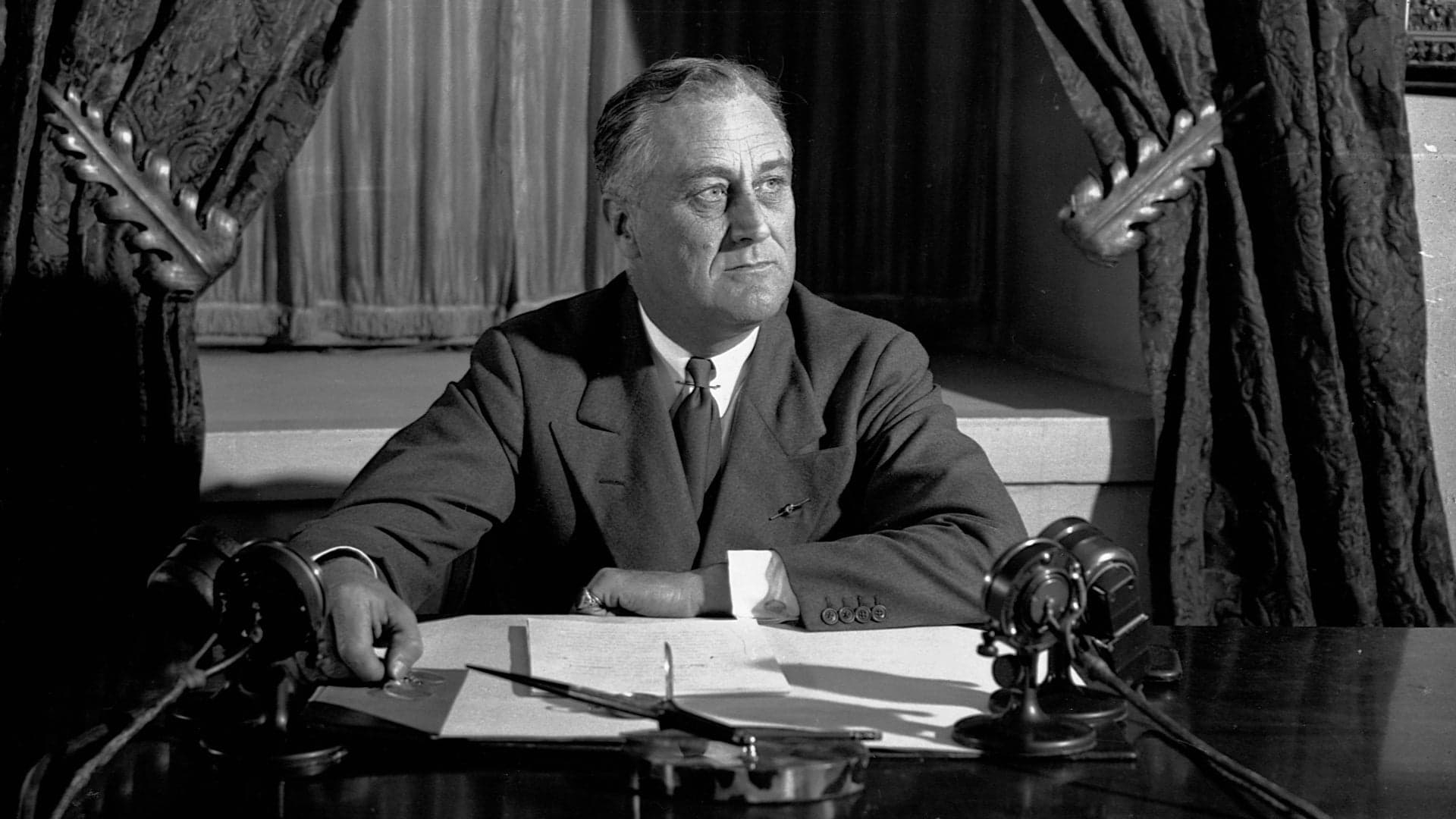On April 12, 1945, President Franklin Delano Roosevelt passes away partway through his fourth term in office, leaving Vice President Harry S. Truman in charge of a country still fighting the Second World War and in possession of a weapon of unprecedented and terrifying power.
On a clear spring day at his Warm Springs, Georgia, retreat, Roosevelt sat in the living room with Lucy Mercer (with whom he had resumed an extramarital affair), two cousins and his dog Fala, while the artist Elizabeth Shoumatoff painted his portrait. According to presidential biographer Doris Kearns Goodwin, it was about 1 p.m. that the president suddenly complained of a terrific pain in the back of his head and collapsed, unconscious.
One of the women summoned a doctor, who immediately recognized the symptoms of a massive cerebral hemorrhage and gave the president a shot of adrenaline into the heart in a vain attempt to revive him. Mercer and Shoumatoff quickly left the house, expecting FDR’s family to arrive as soon as word got out. Another doctor phoned first lady Eleanor Roosevelt in Washington, D.C., informing her that FDR had fainted. She told the doctor she would travel to Georgia that evening after a scheduled speaking engagement. By 3:30 p.m., though, doctors in Warm Springs had pronounced the president dead.
Eleanor delivered her speech that afternoon and was listening to a piano performance when she was summoned back to the White House. In her memoirs, she recalled that ride to the White House as one of dread, as she knew in her heart that her husband had died. Once in her sitting room, aides told her of the president’s death. The couple’s daughter Anna arrived and the women changed into black dresses. Eleanor then phoned their four sons, who were all on active military duty. At 5:30 pm, she greeted Vice President Truman, who had not yet been told the news. A calm and quiet Eleanor said, “Harry, the president is dead.” He asked if there was anything he could do for her, to which she replied, “Is there anything we can do for you? For you are the one in trouble now.”
Indeed, Truman had rather large shoes to fill. FDR had presided over the Great Depression and most of World War II, leaving an indelible stamp on American politics for several decades. He also left Truman with the difficult decision of whether or not to continue to develop and, ultimately, use the atomic bomb. Shockingly, FDR had kept his vice president in the dark about the bomb’s development and it was not until Roosevelt died that Truman learned of the Manhattan Project.
Eleanor threw herself into FDR’s funeral preparations. Thousands of Americans lined the tracks to bid Roosevelt farewell while a slow train carried his coffin from Warm Springs to Washington, D.C. After a solemn state funeral, he was buried at his family’s home in Hyde Park, New York.
